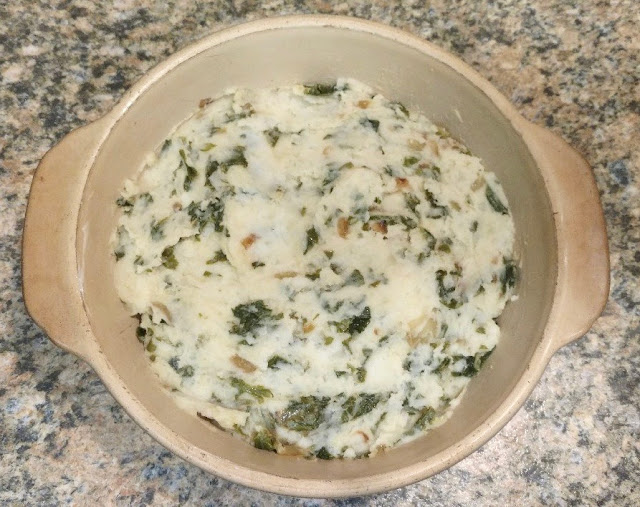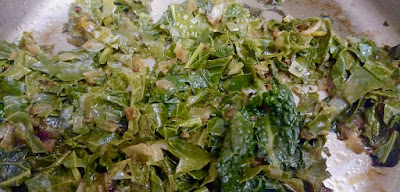
Recipe: Colcannon with a twist -- chard and kale

|
Colcannon is an old Irish side dish: Mashed potatoes mixed with cabbage and onions. It's a favorite for family get-togethers and winter dinners, and can serve as a holiday side dish, too.
The Gaelic name means "white headed cabbage." So taking the cabbage out of colcannon does seem like it can't really be called "colcannon." But for lack of a Gaelic dictionary, this variation is colcannon with a twist.
Before the big cabbage heads are mature, this recipe uses what's in abundance now -- young winter greens. That includes baby chards, kales and, yes, cabbages.
(Stick to the green-hued greens and not red chard or cabbage; the red may bleed into the mashed potatoes. )
Think of this colcannon as healthier mashed potatoes (all those extra antioxidants!) with no gravy necessary.
Another plus: This dish can be made ahead and re-warmed for gatherings.
Colcannon with mixed winter greens
Makes 6 servings
Ingredients:

|
Comments
0 comments have been posted.Sacramento Digs Gardening to your inbox.
Sites We Like
Garden Checklist for week of April 21
This week there’s plenty to keep gardeners busy. With no rain in the immediate forecast, remember to irrigate any new transplants.
* Weed, weed, weed! Get them before they flower and go to seed.
* April is the last chance to plant citrus trees such as dwarf orange, lemon and kumquat. These trees also look good in landscaping and provide fresh fruit in winter.
* Smell orange blossoms? Feed citrus trees with a low dose of balanced fertilizer (such as 10-10-10) during bloom to help set fruit. Keep an eye out for ants.
* Apply slow-release fertilizer to the lawn.
* Thoroughly clean debris from the bottom of outdoor ponds or fountains.
* Spring brings a flush of rapid growth, and that means your garden is really hungry. Feed shrubs and trees with a slow-release fertilizer. Or mulch with a 1-inch layer of compost.
* Azaleas and camellias looking a little yellow? If leaves are turning yellow between the veins, give them a boost with chelated iron.
* Trim dead flowers but not leaves from spring-flowering bulbs such as daffodils and tulips. Those leaves gather energy to create next year's flowers. Also, give the bulbs a fertilizer boost after bloom.
* Pinch chrysanthemums back to 12 inches for fall flowers. Cut old stems to the ground.
* Mulch around plants to conserve moisture and control weeds.
* From seed, plant beans, beets, cantaloupes, carrots, corn, cucumbers, melons, radishes and squash.
* Plant onion sets.
* In the flower garden, plant seeds for asters, cosmos, celosia, marigolds, salvia, sunflowers and zinnias.
* Transplant petunias, zinnias, geraniums and other summer bloomers.
* Plant perennials and dahlia tubers for summer bloom.
* Mid to late April is about the last chance to plant summer bulbs, such as gladiolus and tuberous begonias.
* Transplant lettuce seedlings. Choose varieties that mature quickly such as loose leaf.